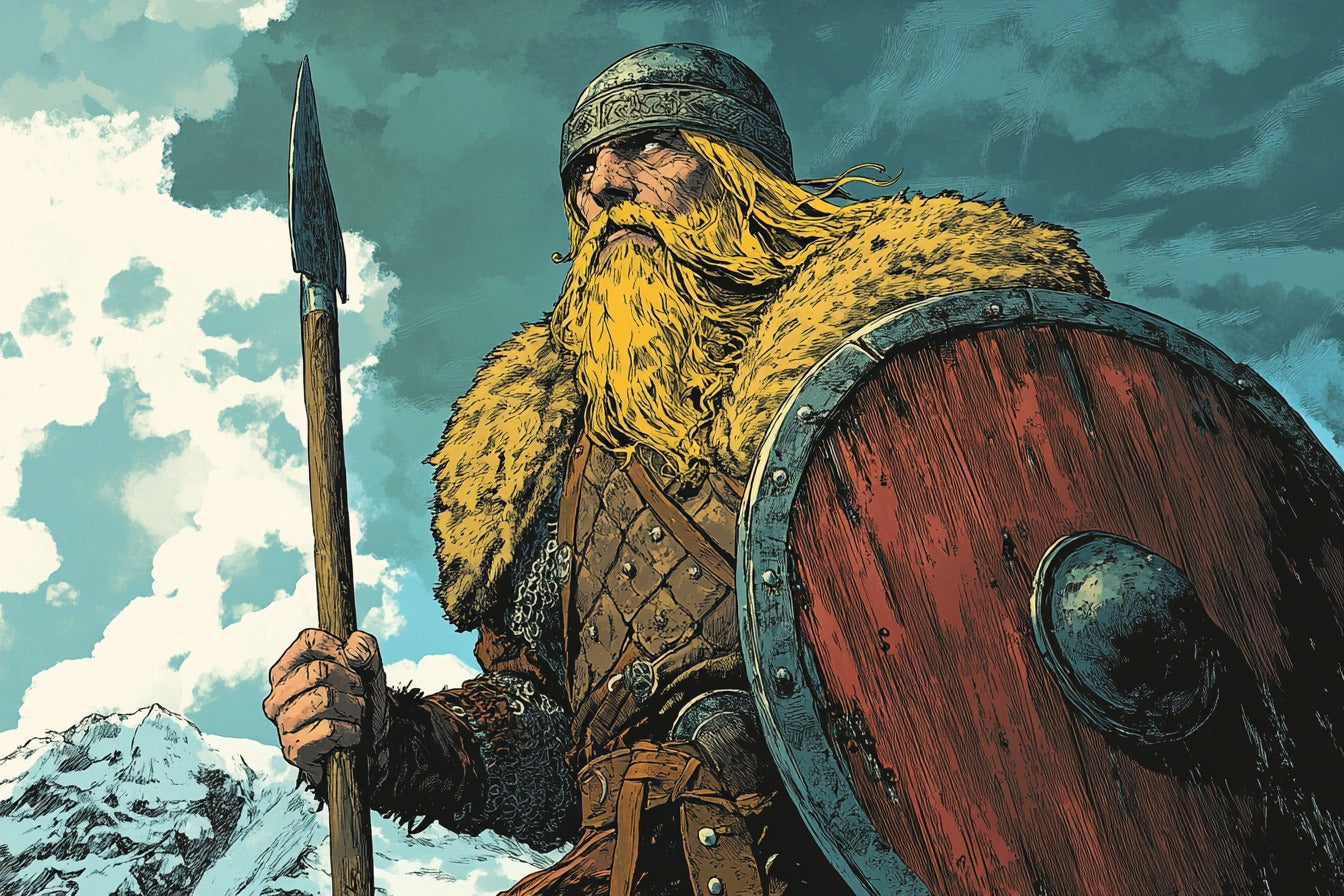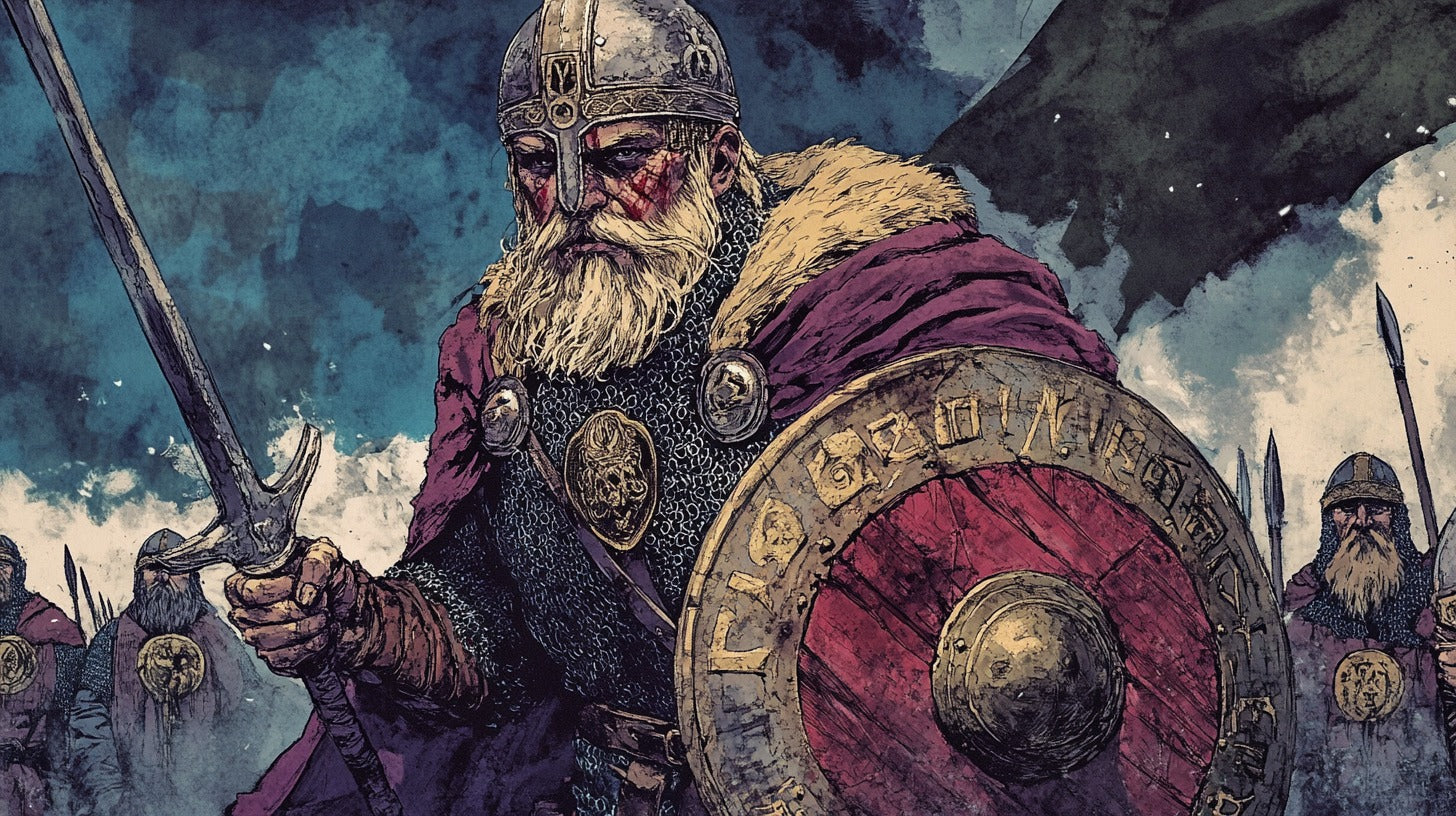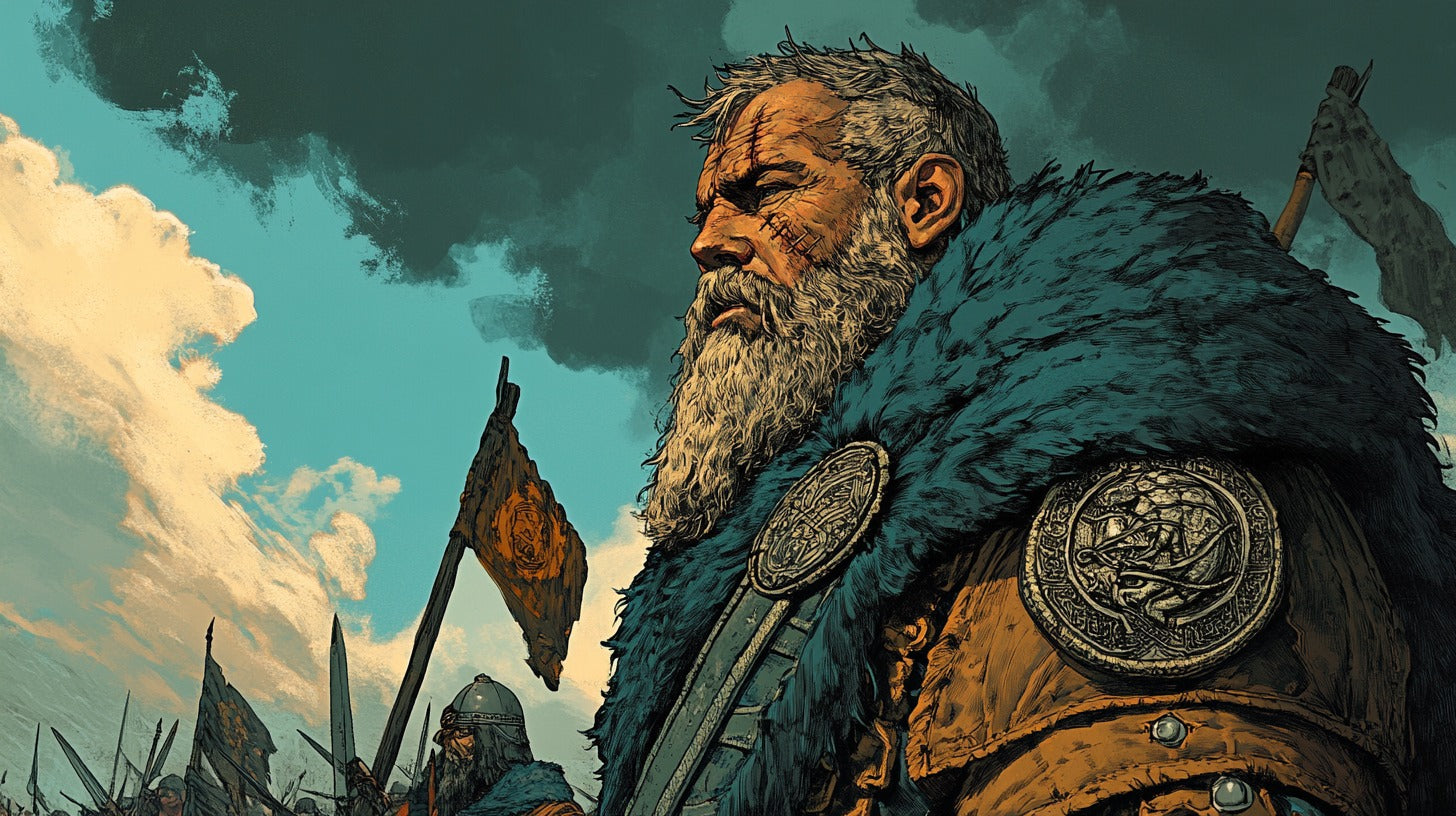
Harald Bluetooth: A King Who United Denmark
Few figures loom as large as Harald Bluetooth, the king who united Denmark and brought Christianity to his people, throughout Danish history. His reign, spanning from approximately 958 to 986 CE, marked a pivotal moment in the formation of the Danish nation and the transformation of Scandinavian society. But who was this man whose name now graces modern technology, and what legacy did he leave behind?
Early Life and Rise to Power
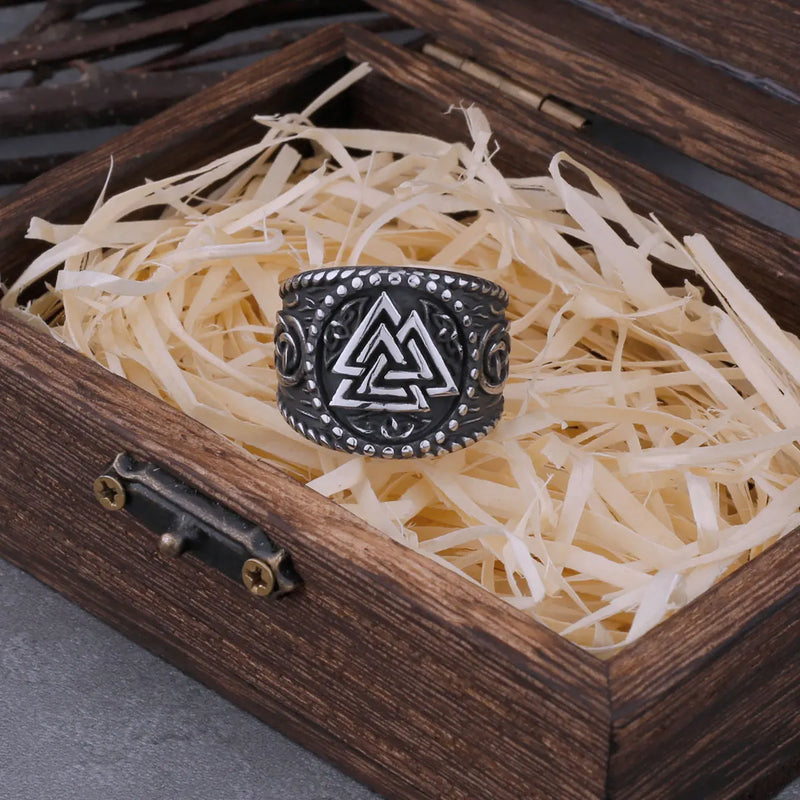
Valknut & Web of Wyrd Ancient Norse Ring
Harald's Origins
Harald Bluetooth was born into a world of transition. The son of King Gorm the Old and Queen Thyra, Harald came of age during a time when the old ways of Norse paganism were increasingly coming into contact—and often conflict—with the expanding influence of Christianity from the south.
The exact date of Harald's birth is unknown, but it's believed to be around 920 CE. As a young prince, he would have been raised in the warrior tradition of his Viking ancestors, trained in the arts of war and leadership that were essential for a future king.
Ascension to the Throne
Harald's ascension to the throne of Denmark came sometime around 958 CE, following the death of his father, Gorm the Old. The Denmark he inherited was not the unified nation we know today, but rather a collection of smaller kingdoms and chieftainships, loosely bound by ties of kinship and allegiance.
From the beginning of his reign, Harald faced significant challenges. To the south, the rising power of the Holy Roman Empire posed a constant threat. Within Denmark itself, rival claimants and powerful jarls (earls) challenged his authority. It would take all of Harald's political acumen and military skill to navigate these turbulent waters.
Unification of Denmark

The larger Jelling stone, showing the inscription concerning Harald / Photo: Jürgen Howaldt, CC BY-SA 2.0
Military Campaigns
One of Harald's most significant achievements was the unification of Denmark under his rule. This was no small feat, requiring both diplomatic finesse and military might. Harald embarked on a series of campaigns to bring the various regions of Denmark under his control.
These campaigns likely involved a combination of warfare, negotiation, and strategic marriages. Harald was known for his ability to forge alliances, often sealing them with marriages between noble families. This approach helped to knit together the fabric of Danish society under his rule.
The Jelling Stones
Perhaps the most tangible evidence of Harald's unification of Denmark comes in the form of the famous Jelling Stones. These runestones, located in Jelling, Denmark, serve as a sort of royal proclamation carved in stone.
The larger of the two stones, raised by Harald himself, bears an inscription that proudly declares:
"King Harald bade these memorials to be made after Gorm, his father, and Thyra, his mother. The Harald who won the whole of Denmark and Norway and turned the Danes to Christianity."
This inscription not only confirms Harald's rule over a unified Denmark but also touches on another of his most significant acts: the Christianization of the Danish people.
Conversion to Christianity
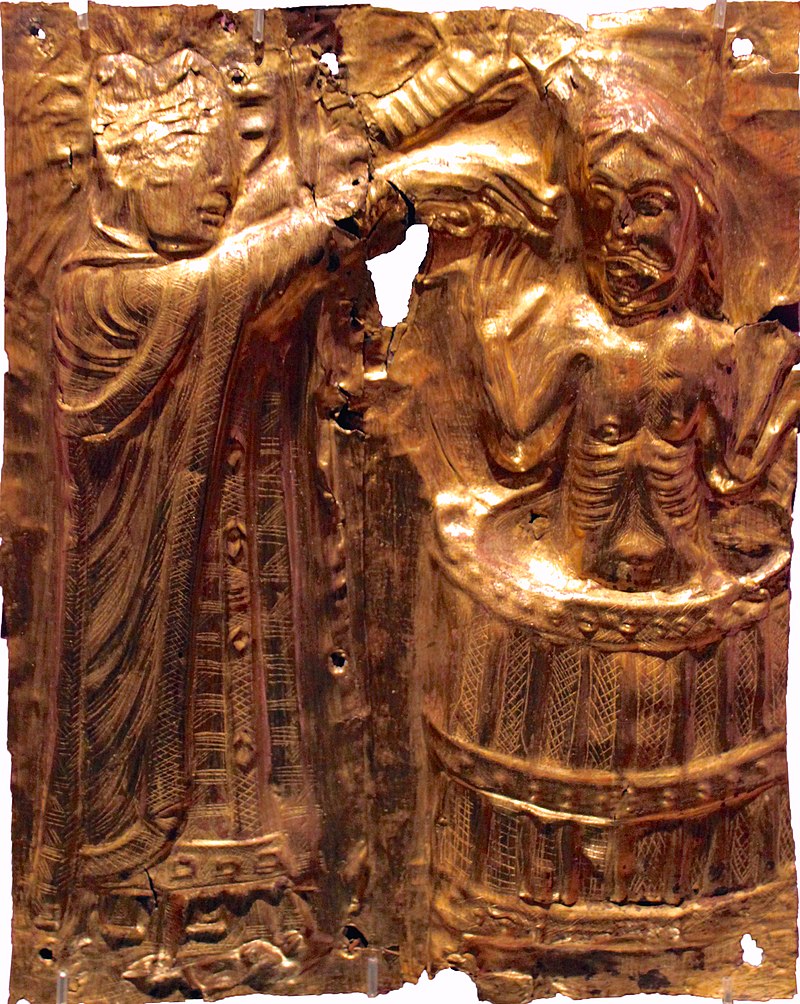
Bishop Poppo the missionary baptising Harald Bluetooth in 960 / Photo: Anagoria
Harald's Personal Conversion
The conversion of Harald Bluetooth to Christianity was a watershed moment in Danish history. According to some accounts, Harald was baptized around 965 CE by a German missionary named Poppo. The story goes that Poppo performed a miracle, carrying a red-hot iron glove without injury, which convinced Harald of the power of the Christian God.
Whether this specific story is true or not, what's clear is that Harald's conversion was as much a political decision as a spiritual one. By aligning himself with the Christian kingdoms to the south, Harald gained powerful allies and positioned Denmark as part of the broader European community.
Christianization of Denmark
Following his own conversion, Harald set about the task of Christianizing his people. This was no simple matter, as the old Norse gods were deeply ingrained in Danish culture and identity. Harald's approach seems to have been relatively gradual and non-violent, at least by the standards of the time.
He oversaw the construction of churches throughout Denmark and brought in clergy from Germany to minister to the growing Christian population. The famous church at Roskilde, now the burial place of Danish royalty, was originally built under Harald's reign.
However, it's important to note that the Christianization of Denmark was a process that continued long after Harald's reign. Many Danes maintained their pagan beliefs alongside their new Christian faith for generations.
Foreign Relations and Trade
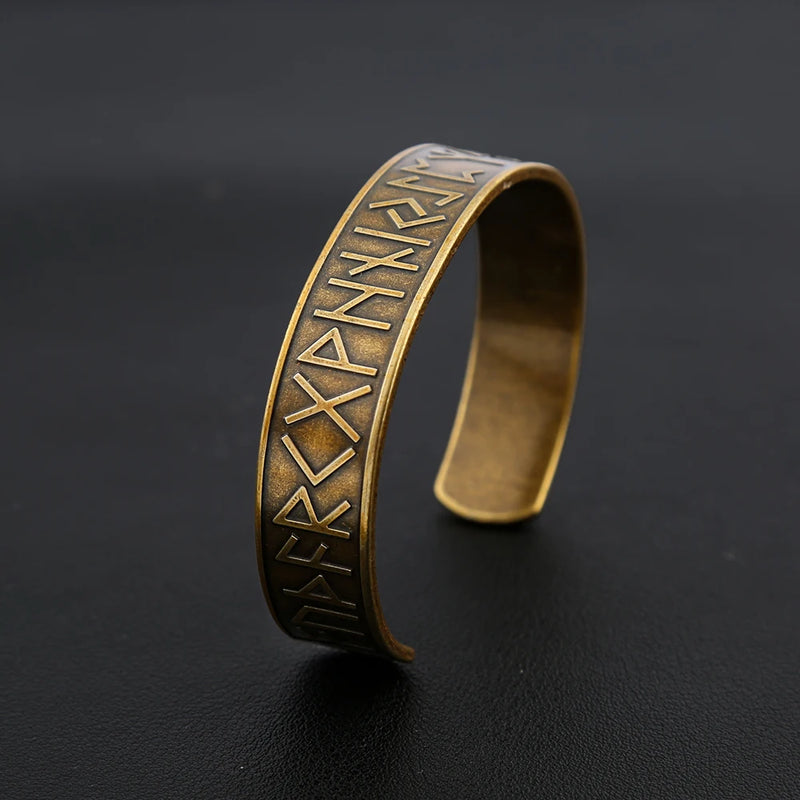
Gold Old Norse Rune Cuff Arm Ring
Relations with the Holy Roman Empire
Harald's reign saw a complex dance of diplomacy with the Holy Roman Empire to the south. While he sought to maintain Danish independence, Harald also recognized the benefits of close ties with his powerful southern neighbor.
In 974 CE, Harald reached an agreement with Emperor Otto I, which allowed for the establishment of dioceses in Denmark. This move helped to solidify the position of the Christian church in Denmark while also giving Harald more control over ecclesiastical matters in his realm.
Trade and Urban Development
Under Harald's rule, Denmark saw significant growth in trade and urban development. The famous ring fortresses, known as Trelleborg forts, were constructed during this period. These perfectly circular forts, built with geometric precision, served as both military installations and centers of trade and administration.
Harald also oversaw the expansion of the important trading town of Hedeby, located near the southern border of Denmark. This town, with its strategic location between the North and Baltic Seas, became a crucial hub in the networks of Viking Age trade.
Legacy and Downfall
Map showing Harald Bluetooth's kingdom (in red) alongside the territories of his vassals and allies (in yellow), illustrating the extent of his influence across Scandinavia and surrounding regions during the 10th century / Illustration: Briangotts CC BY-SA 3.0
Harald's Lasting Impact
Harald Bluetooth's reign left an indelible mark on Danish history. His unification of Denmark laid the groundwork for the kingdom that exists to this day. The introduction of Christianity, while a gradual process, set Denmark on a new cultural and spiritual path that would shape its development for centuries to come.
Perhaps most surprisingly, Harald's name lives on in modern technology. The Bluetooth wireless technology standard is named after him, with the Bluetooth logo combining the runic letters for "H" and "B". This modern homage speaks to the enduring fascination with Harald's legacy.
Rebellion and Exile
Despite his achievements, Harald's reign ended in defeat and exile. In 986 CE, his own son, Sweyn Forkbeard, raised a rebellion against him. The reasons for this rebellion are not entirely clear, but it may have been connected to tensions between the old pagan ways and the new Christian faith.
Defeated in battle, Harald fled to Jomsborg, a legendary Viking stronghold on the southern Baltic coast. He died shortly after, either from his wounds or from illness, in 987 CE.
Conclusion
Harald Bluetooth stands as a pivotal figure in Danish history, a king who straddled the old world of Viking paganism and the new era of Christian, feudal Europe. His reign saw the birth of Denmark as a unified nation and the beginning of its integration into the broader European community.
Yet, like many great historical figures, Harald's legacy is complex. He was a warrior king who brought peace, a pagan who became Christian, a unifier who ended his life in exile. In the contradictions of his life and reign, we see reflected the turbulent times in which he lived, a period of profound change that shaped the course of Scandinavian and European history.
As we look back on Harald Bluetooth's life and achievements, we are reminded of the power of leadership to shape nations, the complex interplay between politics and religion, and the enduring impact that one person's decisions can have on the course of history. In many ways, the Denmark of today—and indeed, the wider Scandinavian world—still bears the imprint of the king who united a nation and turned the Danes to Christianity.
FAQ
- Why is Harald called "Bluetooth"?
The exact reason is unclear, but it may refer to a prominent dark tooth, or be a mistranslation of his Norse nickname meaning "dark chieftain."
- Did Harald Bluetooth really unite all of Denmark?
While the extent of his rule is debated, Harald is credited with unifying much of what is now Denmark under a single monarchy for the first time.
- How did Harald's conversion to Christianity affect Denmark?
It marked the beginning of Denmark's official Christianization, though the process continued long after his reign. It also aligned Denmark more closely with other European Christian kingdoms.
- What are the Trelleborg fortresses?
These are distinctive circular Viking Age fortresses built during Harald's reign, likely serving military, administrative, and trade functions.
- How is Harald Bluetooth connected to modern technology?
The Bluetooth wireless technology standard is named after him, with its logo combining the runic letters for his initials.
References
Sawyer, P. (1994). Kings and Vikings: Scandinavia and Europe AD 700–1100. Routledge.
Roesdahl, E. (1998). The Vikings. Penguin Books.
Forte, A., Oram, R., & Pedersen, F. (2005). Viking Empires. Cambridge University Press.
Christiansen, E. (2002). The Norsemen in the Viking Age. Blackwell Publishers.
Randsborg, K. (1980). The Viking Age in Denmark: The Formation of a State. Duckworth.
